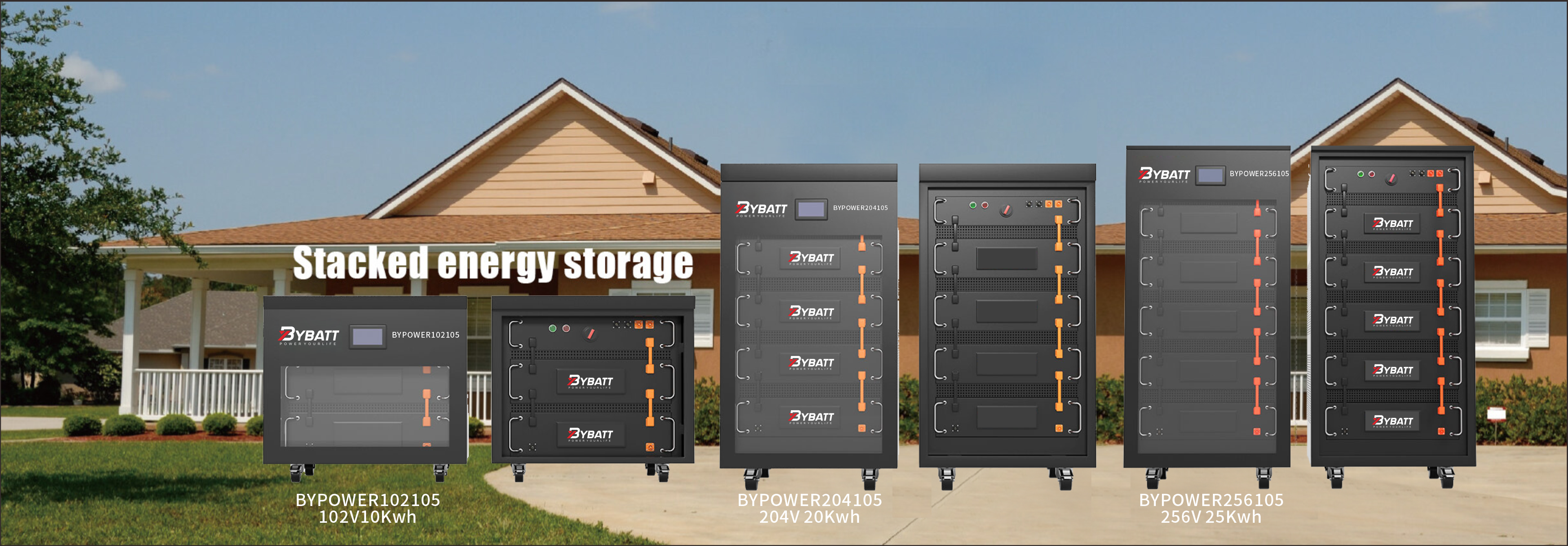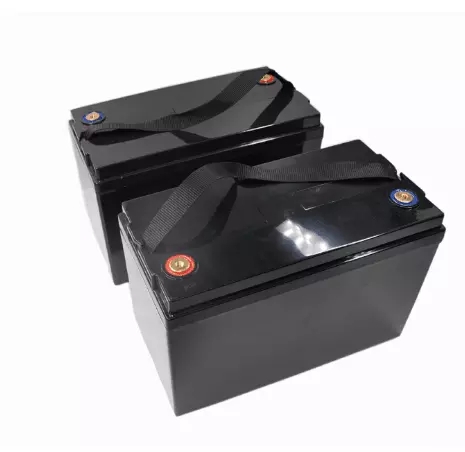Hello everyone, I am BYPOWER battery. Strengthening inspection and maintenance can prolong the service life of the battery, ensure that the battery meets the design requirements, and judge whether the battery needs to be replaced according to reasonable battery inspection procedures. Due to the different needs of the battery, the inspection and maintenance procedures also have a different emphasis. Battery maintenance requires professional training and attention to safety.
Several Factors Affecting Battery Life
- Deep discharge The depth of discharge has a great influence on the cycle life of the battery. If the battery is often deeply discharged, the cycle life will be shortened. Because the deep discharge of the battery with the same rated capacity means that it is often charged and discharged with a large current, and it cannot be recharged in time when it is discharged with a large current or is often in an Undervoltage state. The sulfate particles produced are large, and the active material of the plate cannot be used If it is fully utilized, the actual capacity of the battery will gradually decrease in the long run, which will affect the normal operation of the battery. Since solar photovoltaic power generation systems are generally not prone to overcharging, long-term power deficit is the main reason for battery failure and shortened life in solar photovoltaic systems.
- The discharge rate generally stipulates that the capacity of the 20-hour discharge rate is the rated capacity of the battery. If you use a discharge rate lower than the specified hour, you can get a battery capacity higher than the rated value; if you use a discharge rate higher than the specified hour, the released capacity will be smaller than the rated capacity of the battery, and the discharge rate also affects the terminal of the battery. Voltage value. When the battery is discharged, the electrochemical reaction current is preferentially distributed on the surface closest to the main solution, resulting in the formation of lead sulfate on the electrode surface and blocking the interior of the porous electrode. When the discharge current is high, the above problems are more prominent, so the discharge current becomes larger, the capacity given by the battery is smaller, and the terminal voltage value drops faster, that is, the discharge termination voltage value decreases with the increase of the discharge current. But on the other hand, it is not that the lower the discharge rate, the better. Some studies have shown that the discharge rate is too small for a long time, and the formation of lead sulfate molecules will increase significantly, resulting in stress that will cause the plate to bend and the active material to fall off, and will also reduce the use of the battery. life.
- The external temperature is too high. The rated capacity of the battery refers to the value of the battery at 25°C. It is generally believed that the working temperature of the valve-regulated sealed lead-acid battery is ideal to work within the range of 20-30°C. When the battery temperature is too low, the capacity of the battery is reduced, because the electrolyte cannot fully react with the active material of the plate under low-temperature conditions. The reduced capacity will not be able to meet the expected backup time and keep within the prescribed depth of discharge, which will easily cause an over-discharge of the battery. From the external parameters of the battery, the voltage has a great relationship with the temperature. For every 1°C increase in temperature, the voltage drop of a single cell decreases by 3mV. That is to say, the voltage of the lead-acid battery has a negative temperature coefficient, which is -3mV/°C. By the same token, an increase in ambient temperature is likely to cause an over-discharge of the battery. The high temperature will also cause the battery to lose water and thermal runaway. Temperature is a major factor affecting the normal operation of the battery. In solar photovoltaic systems, the controller is generally required to have a temperature compensation function.
- Partial discharge
- High-temperature storage

Battery inspection
- Appearance inspection: Check whether the battery is bulging or leaking. If the battery leaks, find out the cause and deal with it immediately, so as not to affect the insulation of the whole battery pack;
- Operating temperature rise: The battery does not generate heat when it is in the floating charge state. If any individual battery is found to be heating, the cause should be checked immediately and dealt with in time. If the entire set of batteries is found to be heating, the operating status of the battery should be checked first (both strong charging and discharging) There is a certain temperature rise), whether the floating charge current is too large or the external micro-short circuit of the battery pack occurs, and the problem should be dealt with in time.
- Check the connection point of the battery pack, whether the contact is tight, and whether there is oxidation, and apply Vaseline oil;
- Measure the voltage of the battery pack and the voltage of the single battery once a month. The voltage of each battery should be 2.25-2.35V, and the voltage of a 12V single battery should be around 13.5-14.1V. If the voltage of the battery is found to be low or uneven, The method of supplementary electricity should be adopted to restore the voltage and capacity of the battery to a uniform level;
- Check the capacity of the battery every six months.

Battery maintenance
- In the acceptance stage after the initial installation, a capacity test should be carried out. Parameters such as the internal resistance, floating charge voltage, and capacity of a good-quality new battery are stored in the smart detector as the baseline data of this type of battery.
- Use the battery pack parameter online monitor to detect the floating charge voltage and internal resistance of the battery cells once a month; check the battery case and connectors. It must be ensured that the floating charge terminal voltage of each battery in the battery pack is in the correct range. If abnormal internal resistance, high/low floating charge voltage, deformation of the shell, and corrosion of the coupling parts are found, they should be handled according to the instructions or proposed to the manufacturer... The higher float voltage leads to accelerated battery corrosion and water loss, causing early capacity failure of the battery. Therefore, the use of low floating charge voltage for VRLA batteries is considered to be one of the ways to prevent the early failure of VRLA batteries.
- Every six months or often, check whether the connecting bolts of the pole are loose, clean the dust on the battery, especially the dust on the pole and the connecting strip, prevent the battery from leaking or grounding, and observe whether there is any abnormality in the appearance of the battery. deal with.
- Conduct capacity discharge every year or every two years. If there is insufficient capacity, it should be dealt with in time. The capacity checking discharge on important occasions should be carried out every six months or three months. Pay special attention: Many battery maintenance personnel only discharge for a short time during regular discharge, and do not perform deep discharge. When the discharge is lower than 60%, the problem of battery capacity decline is difficult to reflect on the terminal voltage.
- The discharge current should not be too large, and short-circuit discharge should be avoided. When discharging, the terminal voltage of the battery should not be lower than the cut-off voltage, to prevent the battery from being over-discharged and causing the performance of the battery to decrease and the life to be shortened.
- Equal charging is not recommended at ordinary times. After the battery is discharged or the power is cut off in an accident, the management personnel should go to the battery room in time to check the charging current of the charger to prevent the charging current from being too large or out of control. Appropriate equalizing voltage is the basis for ensuring long battery life. Proper overcharging is used to ensure that the lagging batteries in the battery pack are fully charged. This method should be limited because it needs to overcharge the battery pack. A single battery supplementary charge can be used instead of balanced charging. If the battery pack must be balanced charged, it must Select the balanced charging voltage in strict accordance with the regulations of the battery manufacturer.
- At ordinary times, attention should be paid to the temperature compensation of the floating charging voltage. Unreasonable temperature compensation will affect the service life of the battery.
The use of the above methods depends on the reliability of the system. For a DC system requiring high reliability, a battery monitoring and management system with monomer detection and analysis and internal resistance measurement can be installed to monitor the battery status comprehensively, continuously, and accurately.

